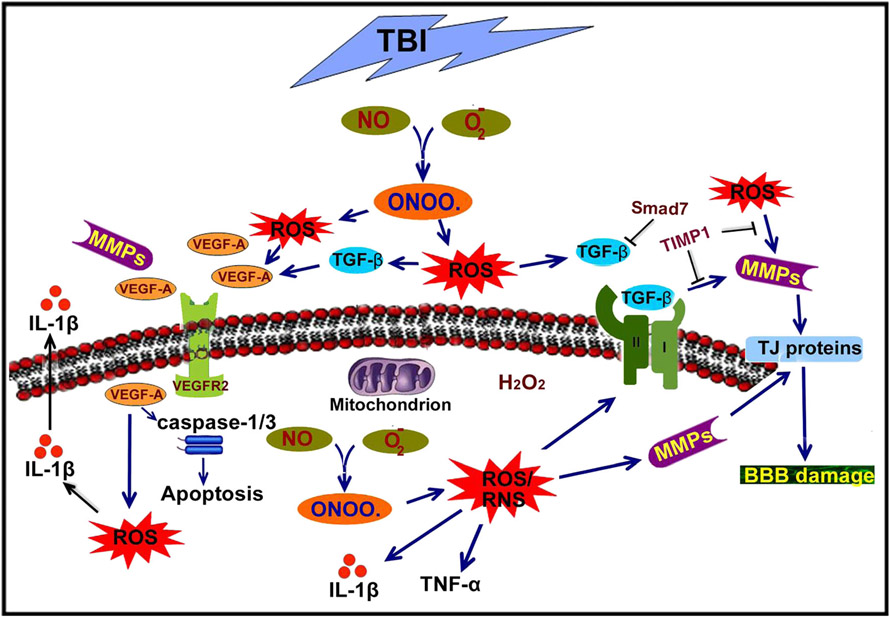Fig. 2.
Schematic representation of oxidative stress-induced BBB disruption and neuroinflammation in traumatic brain injury. Reactive oxygen species (ROS) and reactive nitrogen species (RNS) are the main sources of oxidative stress in brain injury. ROS include superoxide (O2•−), hydroxyl radical (HO•), hydrogen peroxide (H2O2), and hypochlorous acid (HOCl). RNS refer to various nitric oxide (NO)-derived compounds, such as peroxynitrite (−OONO) and nitrogen dioxide (NO2). Superoxide (O2•−) causes tissue damage by promoting hydroxyl radicals from hydrogen peroxide (H2O2) and peroxynitrite (−ONOO) when combined with nitric oxide (NO). ROS activate matrix metalloproteinases (MMPs) that further exacerbate the condition and lead to BBB disruption via degradation of the extracellular matrix and tight junction proteins. Further, MMPs are involved in degradation of vascular endothelial growth factor (VEGFR) and lead to an increase in the level of VEGF that in turn causes ROS and activates caspase-1/3, which leads to cell death. At the same time, ROS or RNS also activate different inflammatory cytokines and growth factors such as IL-1β, TNF-α, and TGF-β, which cause BBB disruption and neuroinflammation

